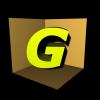the D-equation of a plane
I havent figured out what the D-equation of a plane is.
And im trying to write collision detection code (rewriting common techniques to suit my program).
Now to the question:
I need the D-part of the plane in a calculation, if I have understood it right, you can calculate it as:
"-(origin ^ normal)"
^ = the dot product.
Should a plane with origin(-100,0,-100) and normal(0,1,0)
have D=0?
Thank you for your time
/Fredrik Olsson
After fiddling around with the equation a while, I realized that D is the distance from origin, how silly of me 
Sorry to bother you with this
Thank you.
Sorry to bother you with this
Thank you.
D is the distance only if the plane coefficients are normalized (A² + B² + C² = 1). Make a search in the forum archives for more details.
Cédric
Cédric
notational nitpicking:
there is a mathematic operator called the wedge product, which is used like a ^ b. It operates on vectors, and gives vectors. When acting on two-vectors( [a,b] ^ [c,d]), it returns a scalar (one vector) ac-bd. When acting on three-vectors, it gives the cross product. On higher-dimensional vectors, it gives stranger results. I think that using the * or the . for a dot product is far less confusing...
there is a mathematic operator called the wedge product, which is used like a ^ b. It operates on vectors, and gives vectors. When acting on two-vectors( [a,b] ^ [c,d]), it returns a scalar (one vector) ac-bd. When acting on three-vectors, it gives the cross product. On higher-dimensional vectors, it gives stranger results. I think that using the * or the . for a dot product is far less confusing...
quote:
Original post by tsuraan
notational nitpicking:
there is a mathematic operator called the wedge product, which is used like a ^ b. It operates on vectors, and gives vectors. When acting on two-vectors( [a,b] ^ [c,d]), it returns a scalar (one vector) ac-bd. When acting on three-vectors, it gives the cross product. On higher-dimensional vectors, it gives stranger results. I think that using the * or the . for a dot product is far less confusing...
Well yes, and it is far less confusing to use the terms one dimensional, two dimensional, or three dimensional (shortened to 1d, 2d, 3d) when describing vectors than to use one-vector, two-vector, and three-vector.
This topic is closed to new replies.
Advertisement
Popular Topics
Advertisement
Recommended Tutorials
Advertisement






